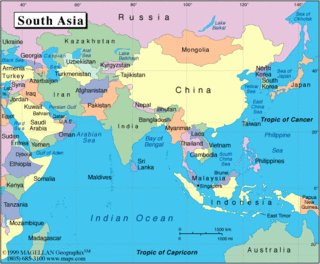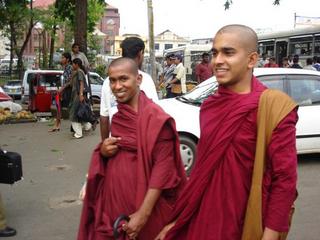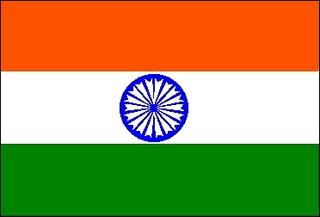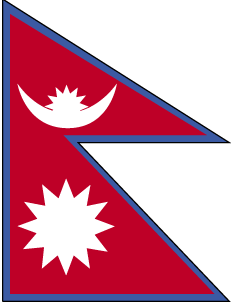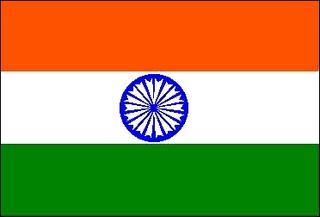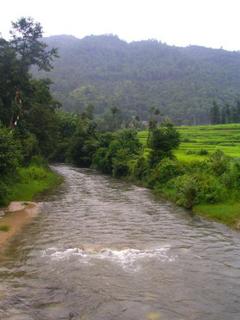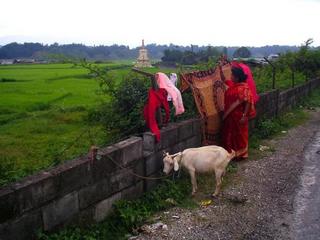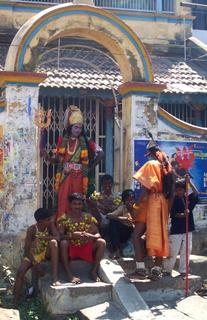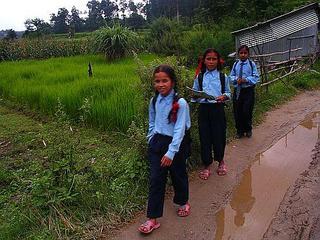
KATHMANDU DIARIES
News from the Landlocked Insurgency-Wracked Isolated
Perched-Precariously-Between-Two-Superpowers
Middle Mountain Kingdom
----------------
It is now time for Dasain, the largest Nepali festival of the year (Oct 4-14). Dasain is Nepal's Christmas, 10 days of celebration in honour of their patron Hindu goddess, Taleju Bhavani. The streets are thronged with shoppers, and public transport is chock-full as people who've been forced to leave home to look for work, or to flee local conflicts, try to return to their homeplace to celebrate.
On Sept. 3, the Maoists declared a unilateral ceasefire, which was met with relief by most locals, but with scorn by the Royal regime, who refused to acknowledge or reciprocate it, claiming it is a time-buyng ploy. It is a time of anticipation, increased activity and some uncertainty amid attempted celebration. The government is busy fixing prices for holiday necessities such as goats (required for the animal sacrifices to the goddess) and rice (the staple of Nepali life). As at Christmas time in the West, crime and robberies are on the rise as increasingly desperate people try to make ends meet.
----------------
from The Himalayan Times, Tues. 4 October 2005/22 Ashwin 2062*
--And US teachers claim they deserve "combat pay":
Teacher's Whereabouts Unknown
Phidim, Oct. 3: The whereabouts of over 500 teachers, whom the Maoists had abducted from different parts of Panchathar yesterday, is not known yet. Maoists had taken the teachers, including principals of high schools and higher secondary schools, to an unidentified location to make them take part in a "training programme."
Meanwhile, the family members of abductees have expressed concern over the status of those abducted. "I am very much worried abou t my husband," said Bina, wife of Rabindra Khatiwada, the principal of Panchathar Multiple Campus. According to eyewitnesses, the Maoists had abducted some of the teachers from the teachers' homes.
-----Sort of like trying to quit the Mafia:
One Shot Dead in Rautahat: An unidentified group shot dead Laxmi Rai Yadav of Haraiya VDC in Rautahat in front of the Shankar Secondary School on Monday afternoon. According to District Police, Yadav had surrendered before the local authorities a few weeks ago after quitting Terai Peoples' National Front.
----Can't tell the players without a scorecard, Pt. 1:
Maoists, State Both Continue to Violate Rights, says NHRC: Himalayan News Service, Birgunj Oct. 3: Notwithstanding a Maoist-called unilateral ceasefire,both the Maoists and the state have been violating human rights across the country, an official of the National Human Rights Commission has said. The Maoists have been abducting Nepali civilians, forcing closure of schools and compelling people to make donations, a member of the NHRC monitoring team said at a press conference organised here today.
Post-ceasefire, the Maoists' act of "collecting donations" from local businesspeople has suddenly gone up, he said.
Maoists have forced the closure of four schools in the district of Rautahat and a school in Thori village, Parsa district, it was stated at the press meet.
"We have evidence to prove that RNA (Royal Nepalese Army) personnel have been mentally and physically torturing the people placed under custody," he said. The NHRC monitoring team also accused the govt. of misusing the state mechanism to abduct people. "While at least 32 persons of Rautahat district have been taken into nonjudicial custody, the whereabouts of nine persons is not yet known," said the NHRC team.
....The NHRC monitoring team accused the govt. of victimising civilians in Parsha district. "Plainclothes security personnel terrorise localities," the NHRC team said, adding:"Security personnel have been blamed for mobilising civilians to spy against Maoists." The state has not yet made the whereabouts known of 2 arrested civilians, the NHRC said.
----"Said a local leader," who preferred not to be named:
War displaced people return home: Tanahun, Oct. 3: Conflict-displaced people of the district, who had been living in the district HQ and in the capital due to uncertainty, have begun returning home for Dasain. Those returning include activists of political parties, civilians, students and teachers. They said they were finding it secure to return home...."This Dasain will be a great one as we will be able to celebrate it without fear," said a local leader.
-------------------
*Nepal has its own calendar, the Newari calendar, which is often used alongside the Western one. It is now the Newari month Ashwin, Year 2062. ----------------I provide these newsclip edits as a window to the Nepali world for my foreign friends. To view the original sources, go to
http://www.thehimalayantimes.com/

 Today had the added intrigue of receiving an email from the "Warden" of Kathmandu warning all American citizens that there was a political strike today, supposedly with the result of no public transportation and possible violence. As usual, the US government was erroneous and it was a peaceful day concluding with not one, but 2 public bus rides.
Today had the added intrigue of receiving an email from the "Warden" of Kathmandu warning all American citizens that there was a political strike today, supposedly with the result of no public transportation and possible violence. As usual, the US government was erroneous and it was a peaceful day concluding with not one, but 2 public bus rides.











 was declared a national holiday
was declared a national holiday
